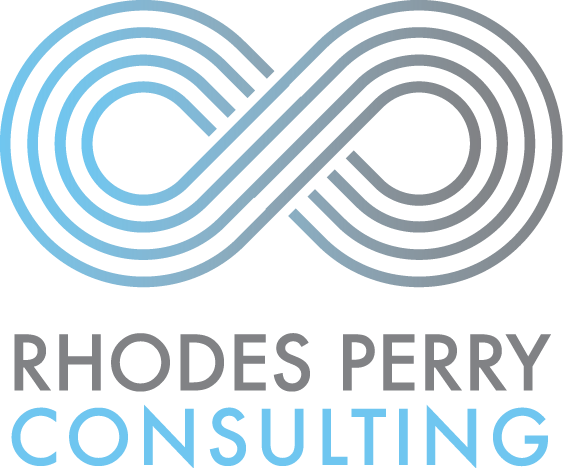2018 DEI Trends: Refreshing the Interview Process to Reduce Bias
This week’s post examines several strategies designed to reduce unconscious bias during the interview process. It is a part of a six week series examining emerging trends for diversity, equity, & inclusion (DEI) professionals. The information offered in this post intends to offer support for senior executives interested in aligning their DEI ethos with their hiring practices. By adapting the available strategies below, your organization has the potential to gain a competitive advantage in the market by attracting diverse talent.
As your organization considers the following strategies, it’s also critical that current staff, especially those a part of your hiring team, spend time understanding how unconscious biases show up in hiring practices. Making unconscious bias learning and development opportunities available to staff involved with hiring decisions is imperative. These opportunities will help staff recognize that every employee has unconscious biases, and they will have an opportunity to name their own. As an organization, employees can also identify ways to minimize bias.
Equipped with this knowledge, HR teams can flex the skills they gained to reduce bias by refreshing the interview process. The following strategies offer some of the trends you’ll see more workplaces incorporate in 2018 and beyond:
1. Revise Job Postings. Job postings reflect much more than an open position’s responsibilities and qualifications. They communicate an organization’s culture, and if your hiring team isn’t actively examining the precise language used in these job descriptions you may be inadvertently communicating a workplace culture that does not align with your DEI ethos. For example, research confirms job descriptions including terms like “dominate,” “competitive,” and “ninja,” reduce the number of women candidates, and terms like “cooperate,” “collaborative,” and “understand,” do the opposite. Scrubbing job postings of gendered language is one of the easiest steps to reduce bias.
2. Leverage AI to Review Resumes. I previously wrote about the power and pitfalls of artificial intelligence (AI) when it comes to making hiring decisions. While many hiring professionals are wary of machines making personnel decisions, consensus exists around allowing computers to review resumes “blindly,” or simply taking out identifying information that would trigger unconscious biases towards a candidate’s demographic characteristics (i.e., their race, gender, sexual orientation, ability, etc.). AI has the power to not only remove names from a resume, but it can also omit a candidate’s age, education, affiliations, etc. “Blind” resume reviews will assist in limiting organizational biases during the hiring process, though, the strategy and the technology are not the panacea to completely eradicate bias from the process.
3. Standardize the Interview. While it’s tempting to conduct an unstructured interview to build rapport with each new candidate, it’s important to resist this urge, and embrace a more structured approach. One of the best ways to minimize bias during the interview is by establishing a core set of questions related to the job, a script to compliment them, and an interview scorecard weighting responses to each interview question. By developing standard questions, sticking to your script and evaluating responses with a score, key decision-makers have the opportunity to consider each candidate’s overall score to inform the hiring choice. Standardizing the process will move you further way from making your choice based on “gut instincts” or first impressions, and ultimately level the playing field for underrepresented candidates within your organization.
4. Establish DEI Hiring Goals. Organizations that openly acknowledge where they are falling short on hiring diverse talent have a unique opportunity to establish targeted DEI hiring goals. For example, if you own a tech company, you are likely to have an overrepresentation of cisgender, white, straight men in your organization. By working with companies that specialize in connecting more women, people of color, and LGBTQ candidates to these jobs, your organization is actively working to address the gender biases that may exist in your hiring practices. Establishing DEI goals may lead to backlash from dominant groups in the workplace, so come to the table equipped with data and research to get the buy-in from leadership.
Additional strategies you may want to consider include hiring tests and adding some kind of “cultural fit assessment.” With respect to hiring tests, please exercise caution before moving forward with implementation. Hiring tests may include asking for work samples, solving a skill test, or asking candidates to compose a time-sensitive email. On the surface, these tests serve as a way to measure the likelihood a candidate will succeed on the job. The reality of these tests is that they aren’t new – in fact they’ve been around since the 1950s – they actually discourage women, people of color, and other underrepresented candidates from pursing the job. Managers are also more likely to overlook test results when they “like” a candidate.
When a manager “likes” a candidate, they will often say that the candidate would be “a good fit.” Such phrase suggests the candidate aligns with the dominant workplace culture, and the hiring manager recognized some aspects of themselves in the candidate. Given how powerful first impressions in the hiring process, some workplaces are now standardizing “likability” questions, and scoring them in a similar fashion to other evaluation standards. Questions for a hiring manager to consider weighting include, “does it matter if I like the candidate?” or “does it matter if the candidate fits in?” Hiring managers can control the “likability factor,” when they weigh it equally with other evaluations measures.
Incorporating some of the above strategies will help limit biases showing up in your organization’s hiring practices. Over the next year, expect to see more innovative approaches to inclusive hiring practices. If you’re interested in learning more about this topic, register for the next RPC webinar, Exploring 2018 DEI Trends, scheduled for Thursday, April 12, and if you would like more support and strategies related to this work, subscribe to the RPC Belonging at Work Newsletter.


